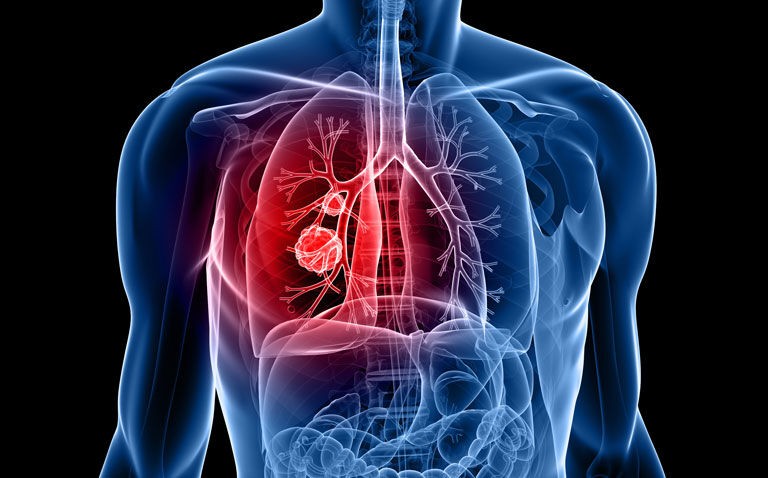Detection of ctDNA after treatment of patients with lung cancer is associated with greater disease recurrence and a reduced overall survival
The presence of residual ctDNA after treatment of patients with non-small cell lung cancer (NSCLC) is associated with a shorter recurrence-free survival and overall survival. This was the key finding of a study carried out in Cambridge, UK.
In 2020, there were over 2.2 million cases of lung cancer which resulted in nearly 1.8 million deaths. Lung cancer has two main forms; small cell and non-small cell, and in the UK, the latter accounts for around 85% of all cases.
Treatment options for NSCLC depend upon disease stage and range from surgical resection or radiotherapy (stage 1) through to surgery and adjuvant chemotherapy or chemo-radiotherapy for those with stage 3. However, an important consideration for any of the different forms of treatment, is the ability to detect the presence of post-therapy residual disease.
One emerging potential biomarker is circulating tumour DNA (ctDNA), which is a component of cell-free DNA shed by malignant tumours into the bloodstream and other bodily fluids. It has the potential for prognostication, molecular profiling and monitoring of patients with cancer and has, for example, been shown to be an informative, inherently specific, and highly sensitive biomarker of metastatic breast cancer.
In fact, highly precise ctDNA detection and quantification methods have the potential to transform clinical practice via non-invasive monitoring of solid tumour malignancies, residual disease detection at earlier timepoints than standard clinical and/or imaging surveillance.
For the present study, the researchers set out to assess ctDNA levels in patients with stage 1 to 3 NSCLC to determine whether detection of this DNA tumour fragment post-therapy could predict patient outcomes.
Using samples from the Lung cancer circulating tumour DNA study (Lucid), the team first determined the levels of ctDNA prior to lung cancer treatment and then sought to detect the DNA two weeks to four months after therapy.
Predictive value of ctDNA
A total of 363 plasma samples from 88 patients with early-stage NSCLC (stages 1, 2 and 3) treated with curative intent surgery (61), surgery and adjuvant chemotherapy/radiotherapy (8) and chemo-radiotherapy (19) were included in the study.
Prior to therapy, ctDNA was detected in 24%, 77% and 87% of patients with stage I, II and III disease respectively. Post-treatment, ctDNA was found in 64.3% of patients (28) who had a clinical recurrence of their cancer.
Detection of ctDNA within the time period of two weeks to 4 months post-treatment occurred in 17% of patients and was associated with shorter recurrence-free survival (hazard ratio, HR = 14.8, 95% CI 5.82 – 37.48, p < 0.00001) and a reduced overall survival (HR = 5.48, 95% CI 2.18 – 13.76, p < 0.0003).
Interestingly, ctDNA was also detected 1 – 3 days after surgery in 25% of patients but not associated with disease recurrence.
Among those where ctDNA was found before treatment, there was also a reduced overall survival (HR = 2.97, p = 0.01) and recurrence free survival (HR = 3.14, p = 0.003) compared to samples where ctDNA was not detected prior to treatment.
The authors concluded that their data supported the clinical utility of ctDNA testing to identify residual disease and recurrence and that this was a potentially sensitive tool to determine which patients were at high risk of relapse and who could benefit from additional adjuvant therapy.
Citation
Gale D et al. Residual ctDNA after treatment predicts early relapse in patients with early-stage non-small cell lung cancer Ann Oncol 2022










